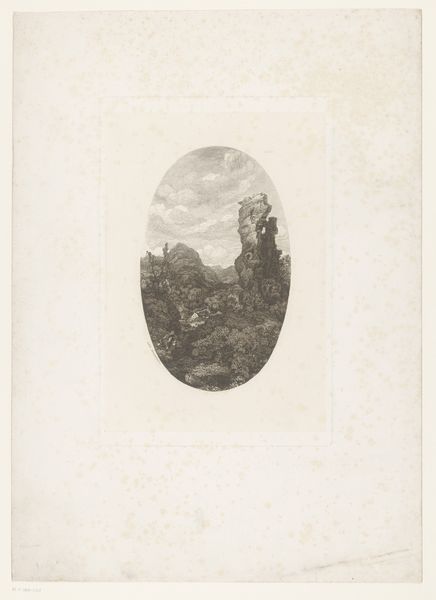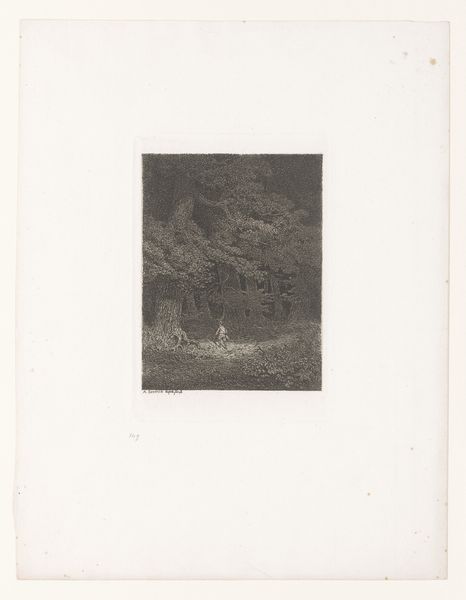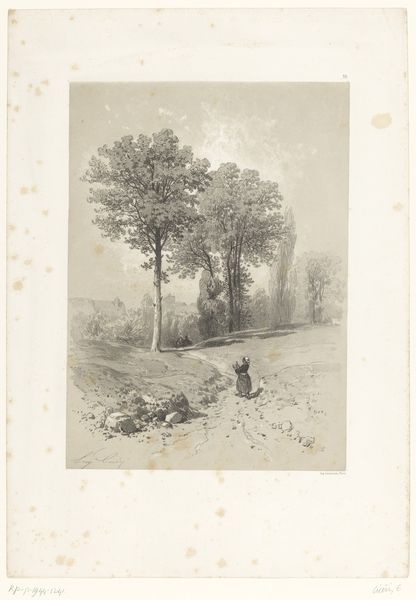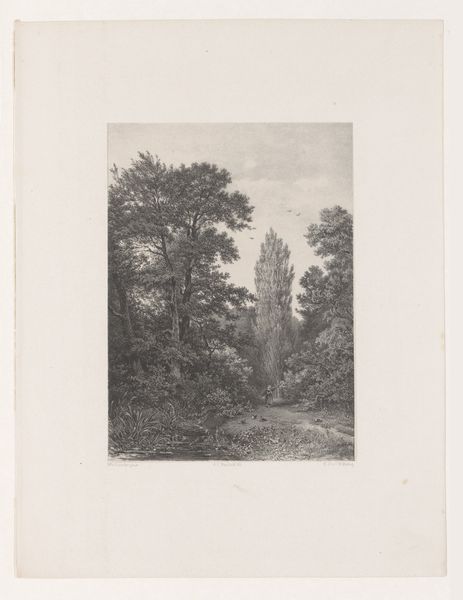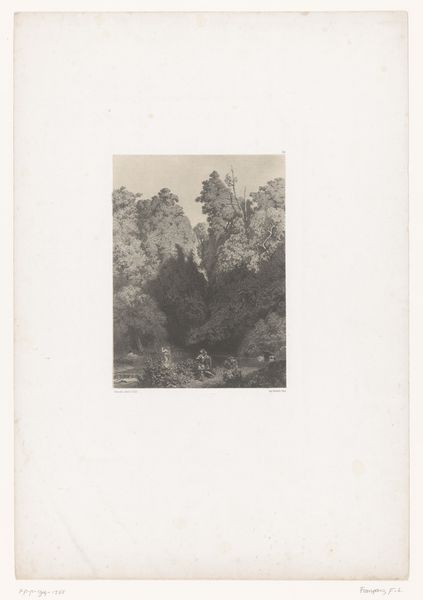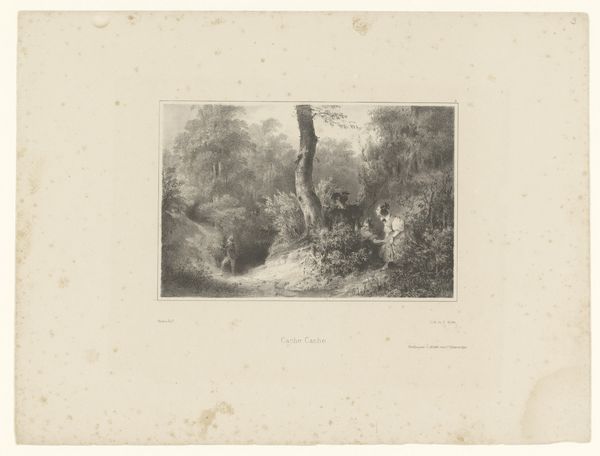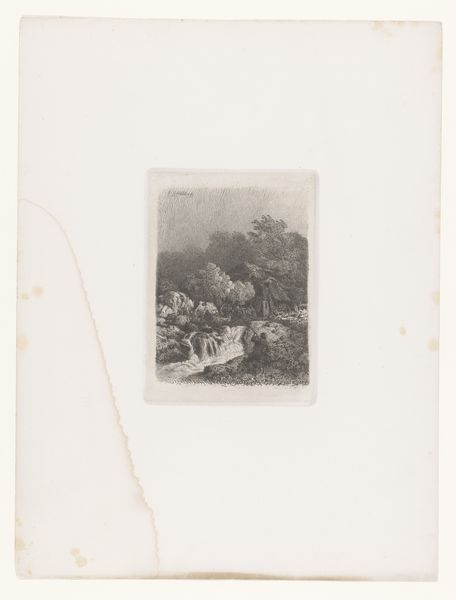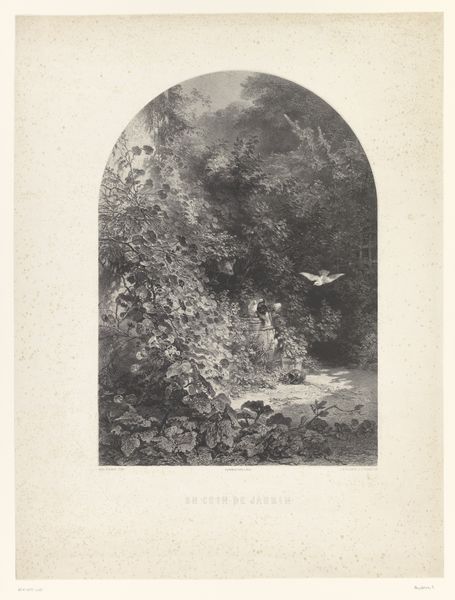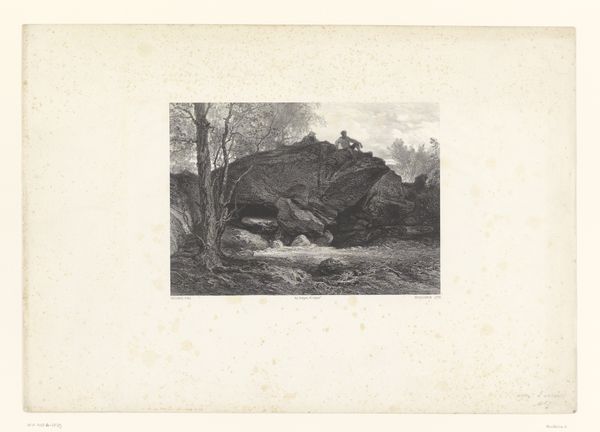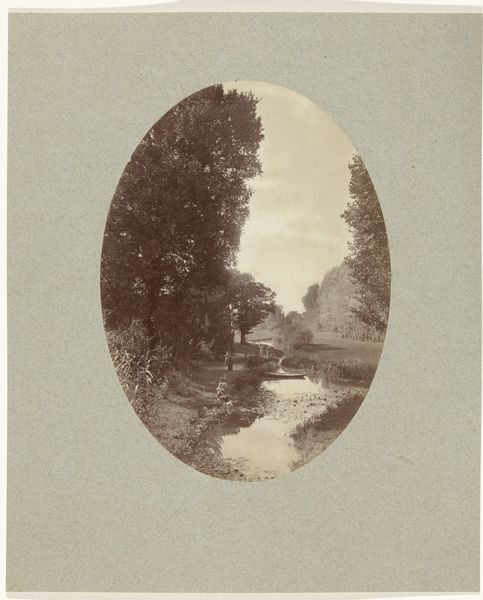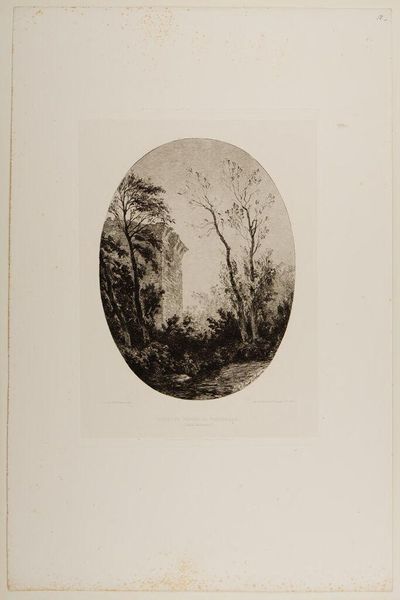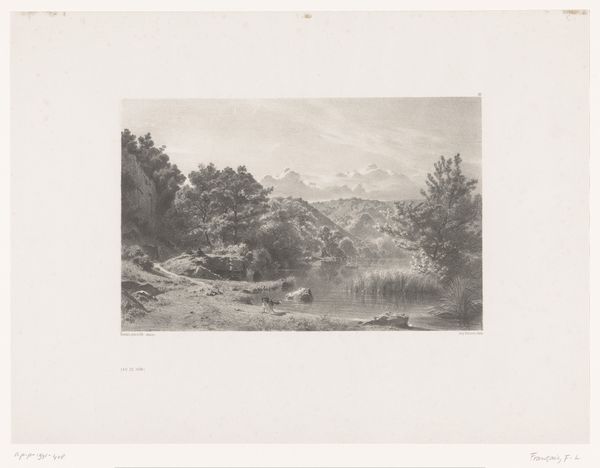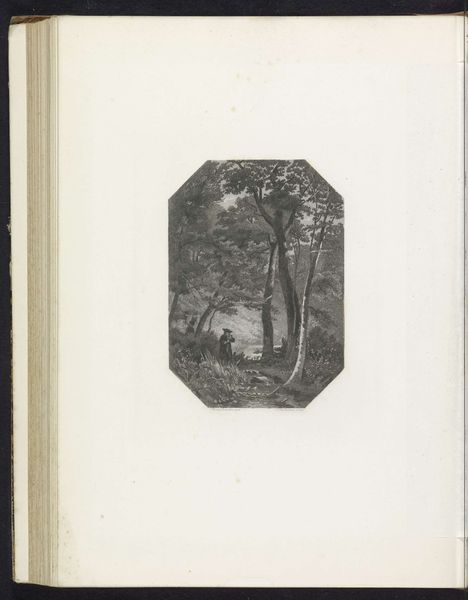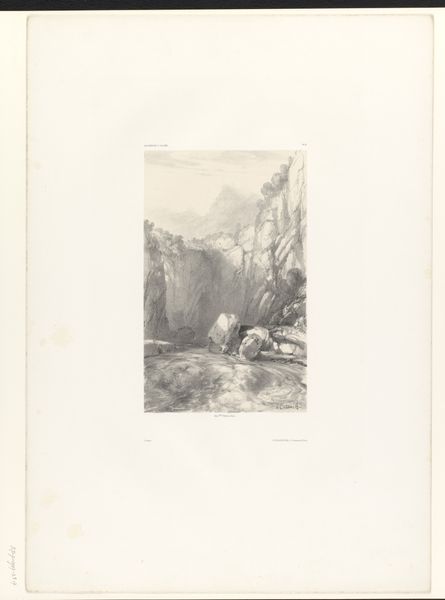
Dimensions: height 446 mm, width 315 mm
Copyright: Rijks Museum: Open Domain
Curator: Looking at François-Louis Français's drawing, “Stadsgezicht met pad en reizigers,” dating from somewhere between 1827 and 1880 and held at the Rijksmuseum, I’m struck by how soft and dreamlike the scene is rendered with just pencil and watercolor. It invites a particular mood, doesn't it? Editor: Indeed. My first impression is of quiet weariness—the figures on the path seem burdened. The almost monochromatic palette reinforces that subdued tone. We should ask ourselves, what does this landscape reveal about the human condition, about the people traveling it? Curator: Well, thinking about the artist's process and the context of landscape drawings at the time, these weren't always about pure aesthetic representation. This work, given its likely creation date, speaks to Romanticism and its view of labor as pastoral idyll; but with pencil and delicate watercolor applications rather than brushstrokes. It creates distance. It hints at observation rather than full experience. Editor: That distance, for me, encourages a reflection on labor—on who has the privilege to stroll versus who is compelled to travel those roads out of necessity. It provokes a commentary on class and the accessibility, or lack thereof, to leisurely appreciation of the natural world. How might their experiences and motivations differed profoundly from the leisure classes? Curator: It’s interesting that you pinpoint the relationship between classes—after all, this landscape exists on paper, available for viewing for the very few at a certain price. This drawing functions within an economic structure; consider the physical and economic resources required to produce it. The materials, the time, and even the journey the paper took! These all form a backdrop that gives the image depth. Editor: Precisely! The aesthetic, seemingly romanticized view masks material and social underpinnings of class disparity, inviting us to critically look beyond just the immediate serene representation and instead explore who benefits, who’s excluded, and which values are subtly promoted via what at first seems simply landscape art. Curator: That pushes us beyond the visual and into the material networks supporting its creation and consumption, something essential for any kind of informed contemporary viewing. Editor: Yes. We have journeyed beyond surface-level readings, prompting us to consider the complexities of labor, landscape, and representation.
Comments
No comments
Be the first to comment and join the conversation on the ultimate creative platform.
